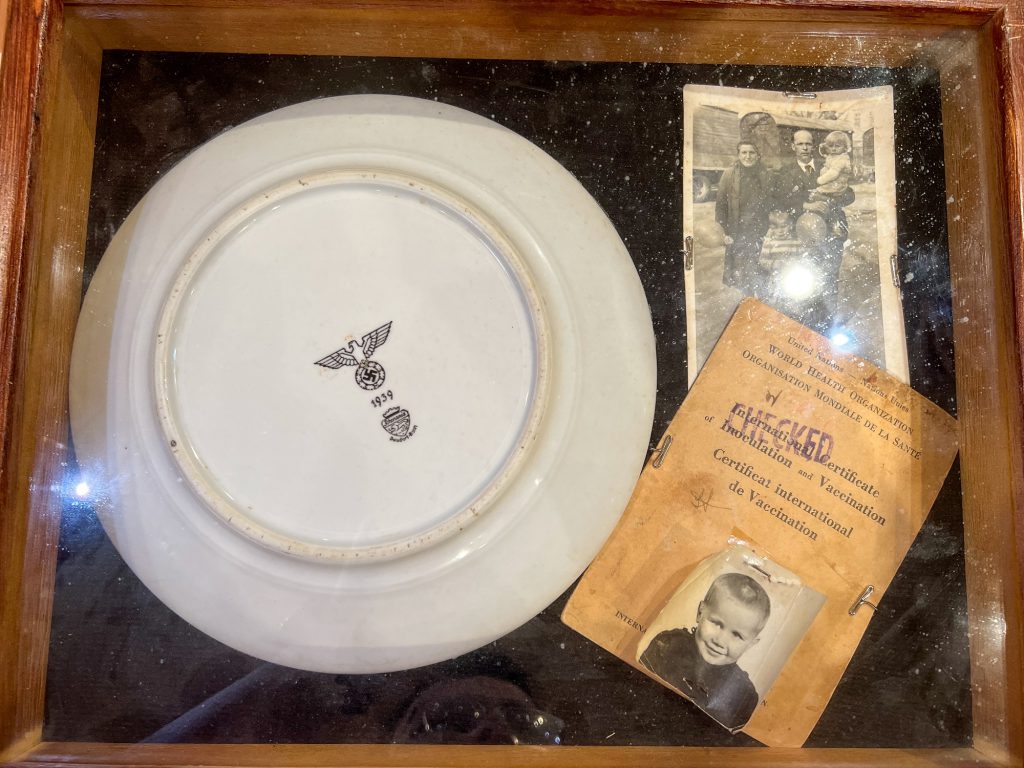
German Porcelain Plate
This porcelain plate was made in 1939 by the German porcelain company, Rhenania Porzellanfabrik, which was based in the Duisdorf quarter of Bonn, Germany. The stamp on the back of the plate contains the Nazi Eagle, which was created as a Nazi symbol in the 1920s, and includes the Nazi Swastika. Though some German porcelain companies exploited forced labor in their production (e.g. Allach company at Dachau), it’s unclear if this was the case with the Rhenania company. Included in this case is a picture of the family that presumably brought this plate to the United States. It may have belonged to the young boy whose World Health Organization immunization record is also included.

German Forks
These two forks were brought to the United States by a displaced person. Due to the nature of World War II, which lasted from 1939 to 1945, around 55 million European citizens were uprooted from their home countries. At war’s end, 11 million remained as displaced persons or refugees. Most of them returned home, either willingly or through forced repatriation. However, 1.2 million insisted that it wasn’t safe for them to return because they were ideologically opposed to the new regimes. About 400,000 of them were Poles who remained in Germany, rather than return to communist Poland. Recognizing the need to develop a plan, which protected international refugees, the Third Committee of the United Nations Assembly declared in 1946 that “No refugees or displaced persons…..shall be compelled to return to their country of origin.” After the United Congress passed the Displaced Persons Act in 1946, 400,000 refugees were able to immigrate to America. Included in that group were citizens of prewar Poland, some of whom were Ukrainians whose homelands had been annexed by the Soviet Union.
Author: Nathaniel Caraballo, Computer Science major, Elms College.